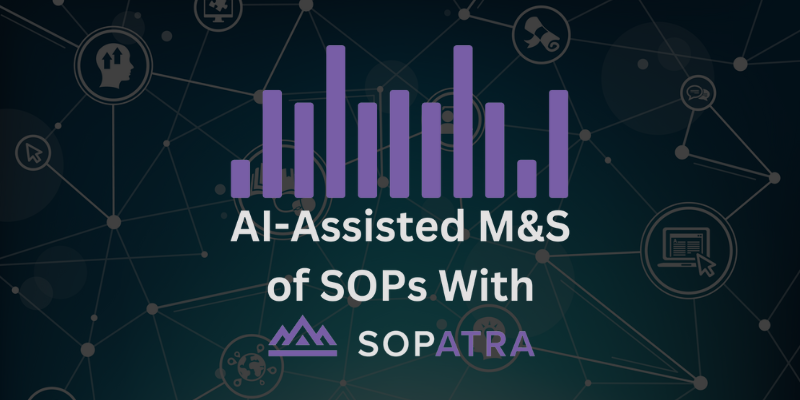AI-Assisted M&S of SOPs With Sopatra Webinar
Don't feel like reading? Watch the webinar recording instead!
.png)
Not in the mood to read? Watch the webinar recording!
This blog is all about diving into the fascinating world of Artificial Intelligence (AI) and its application in the realm of Model-Based Systems Engineering (MBSE). Learn more about the current state of AI and its potential, particularly in the context of Innoslate and Sopatra's AI capabilities.
AI, or artificial intelligence, is the capability of machines to perform tasks that traditionally required human intelligence. These tasks encompass learning, problem-solving, decision-making, and pattern recognition. AI systems can be trained to recognize patterns, analyze data, and make predictions. This automates repetitive tasks and handles complex algorithms.
Dispelling the myth of AI as humanoid robots taking over, AI is, in essence, software written by people. It serves as a tool, providing access to capabilities that are challenging and tedious for humans. As we explore further, we encounter diverse AI branches such as machine learning, natural language processing, computer vision, and ChatGPT technology.
Let's look at the fusion of AI with Model-Based Systems Engineering (MBSE). Natural Language Processing (NLP) has emerged as a key player, with NLP tools like Innoslate and Sopatra paving the way since 2015. Let's unravel the AI-driven capabilities that are transforming the landscape of MBSE.
Now, let's shift our focus to Sopatra, a tool that leverages NLP to translate natural language Standard Operating Procedures (SOPs) into action diagrams. This AI-powered process enhances efficiency by converting text-based information into visual representations. Sopatra facilitates the incorporation of timing, acronyms, and additional factors, optimizing the translation for simulation readiness.
Our journey concludes with a glimpse into the future. The overarching goal is to create an interactive digital system that accelerates, enhances, and reduces the cost of systems engineering. AI, as a pivotal component, is seen as a powerful enabler in achieving this vision. Ongoing research projects with partners like the Navy and NASA exemplify the real-world applications of AI in improving systems engineering processes.
The aspiration is to emulate the seamless interaction depicted in pop culture, like Tony Stark's sophisticated AI assistant, J.A.R.V.I.S., in the Iron Man movies. The aim is to automate tedious tasks, provide visualizations, and offer a dynamic, interactive experience that enhances the capabilities of systems engineers.
In conclusion, AI is not just a buzzword; it's a transformative force in the field of systems engineering. As Innoslate and Sopatra continue to evolve, we anticipate further advancements, collaborations, and breakthroughs that will shape the future of AI-driven MBSE.
Have questions about model-based systems engineering or requirements management? Talk to an expert and see how Innoslate can streamline your projects from start to finish.

Don't feel like reading? Watch the webinar recording instead!

In today’s demanding world where there is little tolerance for error, there are decisions that need to be made daily for complex systems with often...
%20(1).png)
Manassas, VA; 05-13-2022: SPEC Innovations is excited to announce that we have been selected for 2022’s Best of Manassas Award in the Software...